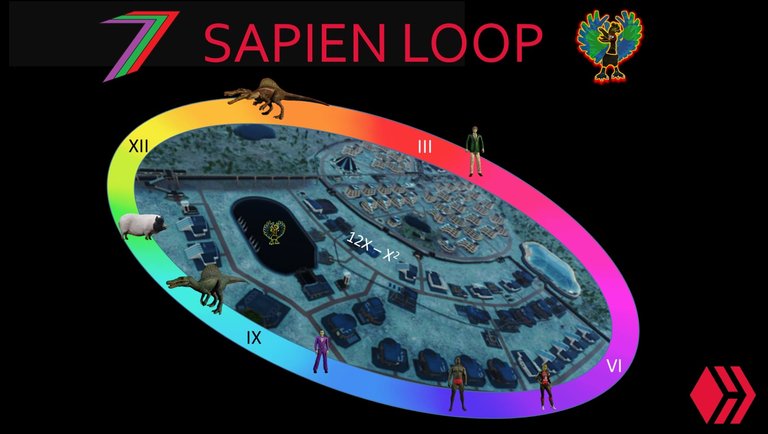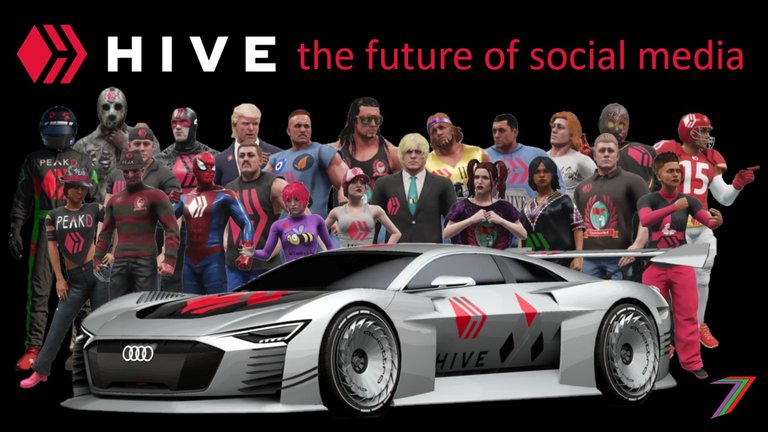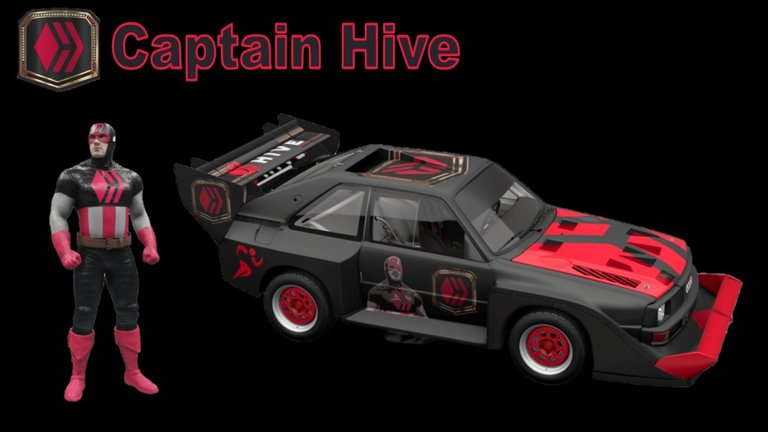
Prologue

Chapter 1: Sapey
Our days begin as they end. Darkness to light back to darkness. The seasons run in a continuous loop of spring, summer, autumn, winter, and back to spring. If it is cold now, one day it will be warm again. We have loops within loops. They occur daily, weekly, monthly, and annually. Some loops may span centuries or even millennia. Whatever is happening now will happen again. The mundane repeats frequently, and the spectacular runs on a much longer loop.
Time has no beginning or end; it is eternal. The past is the future, the future is the past, and the present is both. Not all parts of the loop are of equal significance. Continuous darkness is interrupted by dawn. Continuous light is interrupted by dusk. We know this because we experience it every day. For the loops that are much longer, points of great significance may arrive unexpectedly. When they do, something truly amazing or horrifying occurs.
In this story, we cross the universe to a world very much like our own. It was a planet orbited by a moon. It spun on its axis while rotating around a great star. Like Earth, it experienced day and night and all the seasons. This planet was called Sapia. It consisted of one giant continent and was surrounded by a vast ocean, freckled with a few tiny islands. This continent was one country. This country was called Sapey.
Sapey had a very large, lush, and green centre; it supported most of the life on the planet. Sapey had two large mountain ranges, one in the northwest and the other in the east. These ranges were rich in resources. Sapey also had large uninhabitable areas. They were referred to as the ‘wastelands’. These areas did not support life as the ground was infertile, the water was toxic, and the low-lying air was contaminated by toxic particles off the surface.
Three types of species inhabited Sapey. These were the Sapiens, the Sapiods, and the Sapes.
Sapiens were the most intelligent species. They ruled and controlled the country and its resources. They considered the other types of species as subservient to them or as food. The Sapiens had advanced infrastructure and technology. They lived in predominantly self-sufficient, urbanised regions. High walls that served to block out the contamination from the wastelands surrounded these regions. Regions were located all over the country. New regions were built, when needed, to accommodate population growth.
Sapiens were tall and slender. They were humanoid in appearance. Their skin colour ranged between light green and medium brown. Their eye colour was mostly blue, but on rare occasions, it could be green. They were mostly hairless, with only a small amount of hair sprouting from the tops of their heads. They wore clothes to protect themselves from the elements, but clothes also had symbolic purposes. Clothing was selected based on type of work and sometimes status.
Sapiods had a very basic form of intelligence. This enabled them to perform simple and mundane tasks. Their physical strength enabled them to perform manual labour more efficiently and effectively than the Sapiens. They were very docile and did not use their physical strength in opposition to the Sapiens. They were also low-maintenance.
Sapiods required only minimal necessities to remain in sufficient health to carry out their duties. Most Sapiods were found in the lush green centre, where they worked on farmland and plantations. Some Sapiods worked on the outskirts of the larger regions in agriculture or industrial zones.
Sapiods were tall and muscular. They were also humanoid in appearance. They were similar in appearance to the Sapiens but slightly bigger. Their skin tones were duller than those of the Sapiens. Their hair was very sparse, and some had no hair at all. They wore minimal clothing because they did not need it. Their bodies were not sensitive to the heat or cold. A small item of clothing was sometimes used to identify the territory they worked in.
Sapes were considered to have low intelligence. They were unable to perform any form of work that could not be done more easily by Sapiods or technology. Typically, they were considered food. There were several types of Sape species. Some of them lived on land and were kept on farms in agricultural zones. These Sapes were rapidly bred to be large for consumption as meat. Some of them inhabited the sea. Many of these Sapes were reared on sea farms. A few Sape species would only inhabit areas far from the coast. They could not easily be farmed. Instead, they were often fished.
Sapes varied greatly in appearance. Almost all land Sapes walked on four legs. Most were heavyset and did not move fast. Water Sapes had flippers instead of feet. All Sapes were believed to be vegetarians, but some could become aggressive if they felt threatened.
The Sapiens had become a highly modernised and technologically advanced civilisation. Despite the vast wastelands, it looked and felt like a true Sapien utopia. This was because the Sapiens had achieved something truly remarkable. They had eliminated poverty, war, and crime. All their basic needs were met. No one was excluded. Clean water, healthy food, homes, clothing, energy, healthcare, education, childcare, and even basic technology were available free of charge to all. These were referred to as ‘rights’ and were immutable.
Sapiens could choose not to work and still have access to all these ‘rights’. However, most Sapiens chose to work. They did so to obtain ‘privileges’. ‘Privileges’ enabled Sapiens to enjoy non-essential things such as holidays, upgrades to their homes, nicer clothing, jewellery, and many others. Working also enabled them to progress in their careers and obtain self-fulfilment. What the Sapiens earned from their work was their own. They did not pay taxes of any sort. Other than ‘rights’, there were no disincentives to work. Sapiens had established a system that achieved all the advantages of both socialism and capitalism without any of the disadvantages. They had managed to sustain this system for decades. As technology improved, so did the quality of life for all.
Future of Social Media

Captain Hive is here

Remember to catch me on Spectrumecons, click link below.

Hey @captainhive. i think i've read a couple of later episodes (as i see i've voted some), but i'm now starting at the beginning. i like what i see so far (except for the Sapes being bred for eating - but i choose veganism, so be it!) The Sapiens "economic" system seems very similar to Copiosis https://www.copiosis.com (from what i've read in this first Episode) the roots of which came from Larry K Masons NoPom system https://nopomstuff.info/index.html and his book Invisible Hand which you can find in that link.
i'm looking forward to reading all the episodes, and in particular learning how the governance works (although i have read some of your spectrumecons posts so have a bit of a clue.
Sat Nam
Atma
Some free Hive-engine tokens for you:
!PGM !PIZZA !LOL !LUV
@amaterasusolar, this may well interest you too
BUY AND STAKE THE PGM TO SEND A LOT OF TOKENS!
The tokens that the command sends are: 0.1 PGM-0.1 LVL-0.1 THGAMING-0.05 DEC-15 SBT-1 STARBITS-[0.00000001 BTC (SWAP.BTC) only if you have 2500 PGM in stake or more ]
5000 PGM IN STAKE = 2x rewards!
Discord
Support the curation account @ pgm-curator with a delegation 10 HP - 50 HP - 100 HP - 500 HP - 1000 HP
Get potential votes from @ pgm-curator by paying in PGM, here is a guide
I'm a bot, if you want a hand ask @ zottone444
Thanks! I will check it out!
Congratulations @captainhive! You have completed the following achievement on the Hive blockchain And have been rewarded with New badge(s)
Your next target is to reach 55000 upvotes.
You can view your badges on your board and compare yourself to others in the Ranking
If you no longer want to receive notifications, reply to this comment with the word
STOPTo support your work, I also upvoted your post!
I see ..
Quite a dream community you've built here😂😂😂
So one could choose to work for some time to earn privileges...
Then leave the work and still live in some sort of Luxury.
Hello @captainhive. I love the world building you constructed first for the world of Sapia on the continent of Sapey. The visuals to house your epic story in the constructions of the Sapien world are amazing. I like the name "House of Divine Knowledge". It reminds me of the Hunger Games and Wickd of the Maze Runner.
The world is indeed like Earth. It's important to get an understanding of the three species inhabiting the planet upfront so that, while reading, I'll understand who, what, and why.
Thanks so much for sharing your Sapia world. I'm a bit busy, but will definitely plow my way through this first collection.
Take care.
!ALIVE
@captainhive! You Are Alive so I just staked 0.1 $ALIVE to your account on behalf of @ justclickindiva. (10/10)
The tip has been paid for by the We Are Alive Tribe through the earnings on @alive.chat, feel free to swing by our daily chat any time you want, plus you can win Hive Power (2x 50 HP) and Alive Power (2x 500 AP) delegations (4 weeks), and Ecency Points (4x 50 EP), in our chat every day.

$PIZZA slices delivered:
@atma.love(2/15) tipped @captainhive